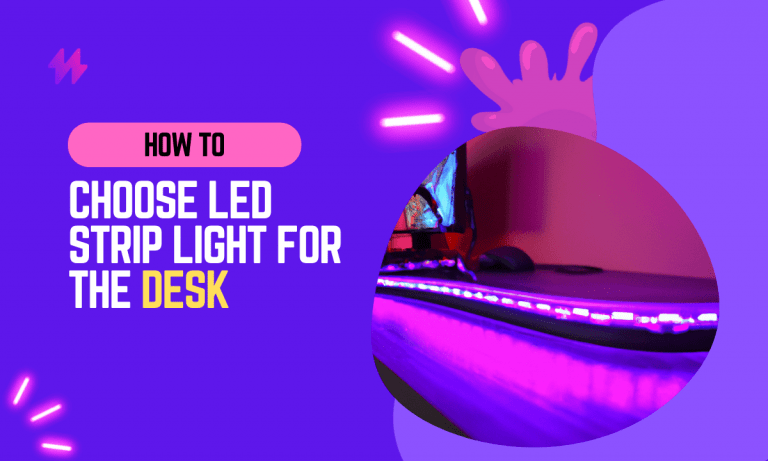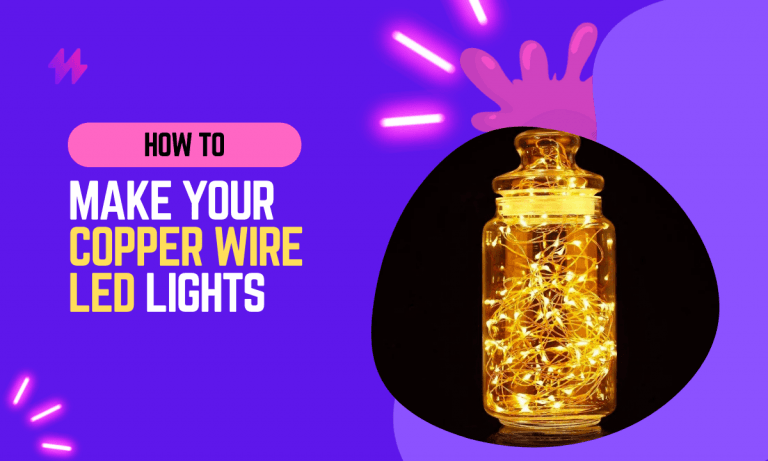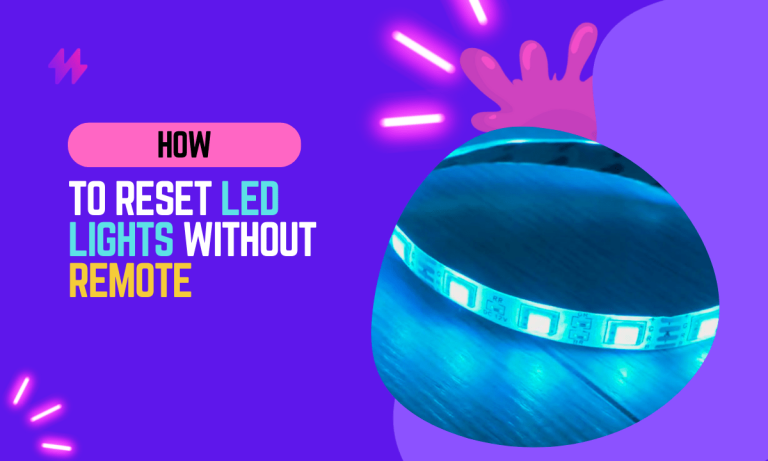Why Do LED Light Flicker on Video and Camera?

One persistent issue that photographers, videographers, and even casual users often encounter is the flickering of LED lights when captured on video or camera footage. The phenomenon of LED light flickering can be frustrating and detrimental to the quality of visual content. It manifests as rapid fluctuations in brightness or a pulsating effect, which can be distracting, visually unappealing, and even pose health risks.
In this blog, we will delve into the reasons why LED light flicker on video and camera footage. We will explore the technical aspects of LED lights, including their operation and the factors that contribute to flickering. Furthermore, we will discuss the effects of LED light flickering on video and camera footage, highlighting the challenges it poses for professionals in the field.
The flickering of LED lights can often lead to a wide range of camera-related issues, especially when filming under inconsistent light sources. To achieve flicker-free footage, it is essential to adjust the video camera settings and utilize non-flickering light sources, ensuring a steady light source for optimal visual results.
Understanding Why LED Lights Flicker: Causes and Effects on Video and Camera Footage
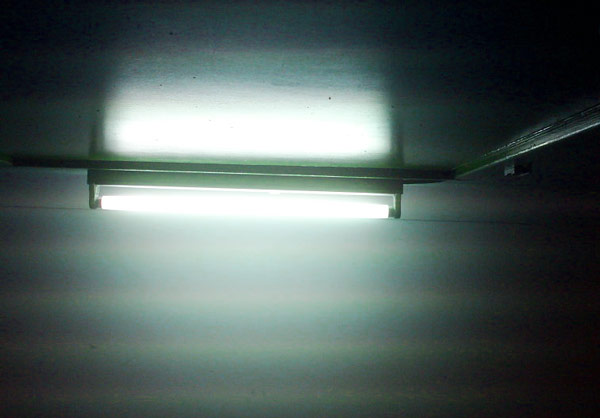
The major factors contributing to LED light flicker on video and camera are:
The major factors contributing to LED light flicker on video and camera are widely understood in the filming community. Maintaining a stable light source while adjusting the right camera settings is crucial to prevent flicker, ensuring bright footage that enhances the viewer’s visual experience. Choosing the right bulbs and understanding the electromagnetic spectrum’s influence on flicker frequency can significantly mitigate potential light flickering issues.
Understanding Why LED Lights Flicker on Video and Camera: Incompatibility with Camera Frame Rates
LED lights and cameras operate on different frequencies. The frame rate of a camera refers to the number of individual frames captured per second. If the frequency of the LED light’s on/off cycles does not align with the camera’s frame rate, flickering can occur.
For example, if the LED light frequency is not a multiple or fraction of the camera’s frame rate, there will be a mismatch, resulting in flickering on the captured footage.
To create seamless footage with LED lights, understanding the interaction between the light sources and camera settings is paramount. Achieving flicker-free videos necessitates mindful consideration of frame rates and adjusting the settings to suit the light emitted, especially when dealing with artificial light sources like inexpensive LED bulbs or fluorescent lights.
Understanding Voltage Fluctuations: Why Do LED Lights Flicker on Video and Camera?
LED lights are sensitive to changes in electrical supply voltage. Fluctuations in voltage can occur due to various factors, including power grid irregularities, load changes, or incompatible dimming systems. These voltage variations can cause the LED lights to flicker as the current flowing through them fluctuates, resulting in inconsistent brightness levels.
LED lights are sensitive to alterations in electrical supply voltage. Fluctuations in voltage can occur due to various factors, including power grid irregularities, load changes, or incompatible dimming systems. These voltage variations can cause the LED lights to flicker as the current flowing through them fluctuates, resulting in inconsistent brightness levels. This flickering problem can significantly affect the filming process, particularly when capturing video with a camera lens. To produce perfect footage, one must ensure that the camera settings align with the flickering light source. The importance of using flicker reduction plugins cannot be overstated, as they help achieve smooth, professional-looking video outputs.
Understanding Pulse-width Modulation (PWM): Why Do LED Lights Flicker on Video and Camera?
PWM is a commonly used technique to control the brightness of LED lights. It works by rapidly turning the LED on and off at a high frequency while varying the width of the pulses. However, if the PWM frequency is low, it can become visible on video footage as flickering, especially when the camera’s exposure settings or shutter speed are not synchronized with the PWM frequency.
To avoid issues with flickering in video footage caused by LED lights, it’s vital to ensure that the camera’s shutter speeds are adjusted appropriately. By aligning the frames per second (fps) recording of the camera with the PWM frequency, filmmakers can create smoother footage and prevent unwanted flickering that would otherwise disrupt the visual effect.
Understanding Dimming Controls: Why Do LED Lights Flicker on Video and Camera?
LED lights are often equipped with dimming capabilities, allowing users to adjust the brightness levels. However, not all dimming controls are compatible with LED lights, leading to flickering issues. Certain dimming techniques, such as phase-cut dimming or trailing-edge dimming, may cause inconsistencies in the electrical current supplied to the LEDs, resulting in flickering.
Also read: Do LED Strip Lights Consume a Lot of Electricity?
The flickering issues associated with LED lights can easily disrupt visual consistency, especially in videos. Thus, utilizing lamps with built-in anti-flicker settings can enhance the visual phenomenon, delivering a flicker-free experience that allows the eyes to fully appreciate bright light without distractions.
Understanding Why Do LED Lights Flicker on Video and Camera: Different Types of LED Light Flickering
LED light flickering can manifest in various ways, depending on the underlying causes. Some common types of flickering include:
LED light flickering can manifest in various ways, depending on the underlying causes. Some common types of flickering include strong flicker from artificial lights or the invisible flicker associated with certain LED light bulbs. Addressing why do LED lights flicker on video and camera by optimizing camera settings and choosing the right lighting system is crucial for achieving flicker-free footage.
- Regular Pulsations, where the light intensity fluctuates rhythmically.
- Random Flickering, which occurs unpredictably.
- Rapid On/Off cycling, where the light rapidly switches on and off.
Understanding Why LED Lights Flicker on Video and Camera Footage
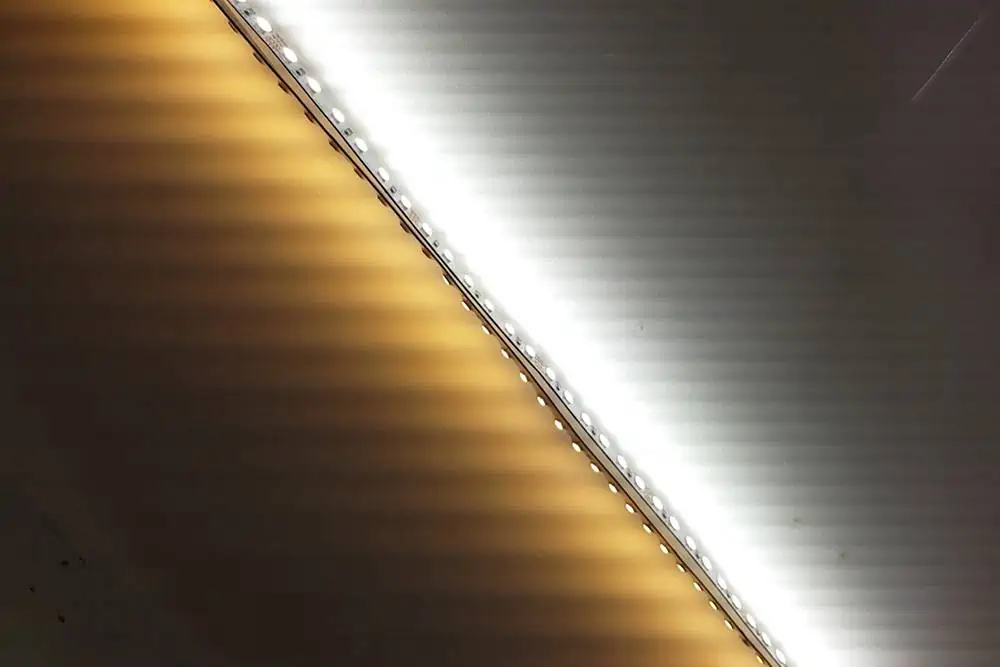
Visible Flickering: Why Do LED Lights Flicker on Video and Camera Quality?
- Flickering LED lights can create noticeable variations in brightness levels throughout the footage, leading to an inconsistent and distracting visual experience.
- These fluctuations in lighting can result in a lack of uniformity, making it challenging to achieve a professional and polished look in video recordings.
- The presence of flickering can be particularly problematic when capturing events, interviews, or scenes with rapid motion, as it can cause distortion and hinder the overall clarity of the footage.
Understanding Strobe Effects: Why Do LED Lights Flicker on Video and Camera?
- LED light flicker on video can produce a strobe effect, where the lights pulsate at a frequency that is perceived as a rapid series of flashes.
- This strobing effect can be visually uncomfortable for viewers and may even trigger seizures in individuals with photosensitive epilepsy or other related conditions.
- It is crucial to minimize or eliminate strobing effects to ensure the safety and well-being of the audience.
Understanding Why LED Lights Flicker on Video and Camera: Challenges for Professional Photographers and Videographers
- Flickering can disrupt the intended lighting setup, making it difficult to maintain consistent and accurate color rendition.
- Professionals who rely on slow-motion or high-speed recording techniques may face additional hurdles, as the flickering can become more apparent and pronounced in such scenarios.
- Time-consuming post-processing efforts may be required to correct or mitigate the effects of flickering, potentially delaying project completion and increasing production costs.
Also read: Manufacturing Process of LED Lights & Fixtures?
To ensure clear and vibrant footage when using LED lights, one must aim for flicker-free visuals that do not disrupt the viewer’s experience. Different lighting systems, including Christmas lights and traditional incandescent bulbs, can produce varying flicker patterns, emphasizing the need for careful selection and adjustment of both the lighting and camera settings to achieve optimal results.
How To Stop LED Lights From Flickering On Camera: Understanding Why Do LED Lights Flicker On Video and Camera

Understanding Why LED Lights Flicker on Video and Camera: Synchronizing Frame Rates with Light Frequency
- Determine the frequency at which your LED light flicker on video by using a slow-motion camera or a specialized LED flicker detection tool.
- Adjust the camera’s frame rate to be an exact multiple of a fraction of the LED light’s frequency to achieve synchronization.
- By aligning the camera’s frame rate with the LED light frequency, you can reduce or eliminate flickering in the captured footage.
Understanding Why LED Light Flickers on Video and Camera: Stabilizing Voltage Supply and Reducing Fluctuations
- Ensure a stable power supply by using high-quality power sources and surge protectors.
- Consider using voltage regulators or stabilizers to minimize voltage fluctuations caused by irregularities in the power grid or other electrical devices.
- If using dimming controls, choose compatible ones that provide smooth and consistent dimming without introducing flickering issues.
You may also like: Do LED Lights Attract Silverfish?
Achieving flicker-free video output is essential for filmmakers looking to enhance the clarity of their visuals, especially when using different light sources. Understanding why do LED lights flicker on video and camera can greatly aid in the prevention of flickering frustrations and ensure a smoother viewing experience.
Understanding Why LED Lights Flicker on Video and Camera: Using High-Frequency PWM
- Opt for LED lights that utilize high-frequency pulse-width modulation (PWM) for dimming, typically above 1 kHz.
- High-frequency PWM reduces the likelihood of visible flickering, as it surpasses the sensitivity of most cameras to capture the pulsating effect.
- When purchasing LED lights, check the specifications or consult with manufacturers to ensure they employ high-frequency PWM dimming technology.
Understanding Why LED Lights Flicker on Video and Camera: Utilizing Dedicated Dimming Controls and Compatible Fixtures
- Use dedicated LED dimmers specifically designed for LED lighting systems to ensure smooth dimming performance.
- Choose dimming controls that are compatible with your LED lights, considering factors such as voltage compatibility, dimming range, and flicker-free operation.
- It is advisable to test the compatibility between LED lights and dimming controls before undertaking critical video or photography projects.
Alternative Lighting Solutions: Why Do LED Lights Flicker on Video and Camera?
- If LED light flickering persists despite applying the above solutions, consider using alternative lighting options such as incandescent bulbs, fluorescent lights, or tungsten lamps.
- These traditional lighting sources do not exhibit the same flickering characteristics as LED lights, providing a workaround for situations where flickering is a persistent problem.
You may also like to read our detailed guide about reasons and ways to stop LED lights flickering.
It is important for filmmakers to recognize the potential impact of various lighting conditions, such as fluorescent lamps or strobe lights, on the quality of their footage. Understanding why do LED lights flicker on video and camera can help in choosing the right filming technique and lighting setup, leading to a more professional and flicker-free video output.
Understanding Why LED Lights Flicker on Video and Camera: Final Thoughts
In conclusion, the flickering of LED lights in video and camera recordings can often pose challenges for content creators and professionals in visual media. This flicker typically results from a mismatch between the frequency at which the LED lights pulse and the frame rate or shutter speed of the camera. LED lights commonly operate by rapidly turning on and off at frequencies that are generally imperceptible to the human eye but can be captured by the sensitive sensors of modern cameras. When the frequency of the LED light pulses aligns closely with the camera’s capturing speed, it can create a strobing effect in the recorded video, which can be distracting and diminish the quality of the footage.
Addressing this issue effectively requires an understanding of both the lighting equipment and camera settings. Adjusting the shutter speed or changing the frame rate of the camera can often mitigate the flickering effect by either syncing with the frequency of the LED lights or by smoothing out the appearance of the flicker in the final footage. Alternatively, using high-quality LED lights designed specifically for video production, which offer flicker-free performance or have adjustable refresh rates, can resolve these issues without needing to compromise on camera settings. For those in professional settings, investing in specialized lighting equipment that ensures consistent illumination without pulsing can be a worthwhile consideration to maintain high production values. Ultimately, understanding the technical aspects of both LED lighting and camera operations is key to overcoming the challenges of flicker, ensuring that the final visual output is both pleasing and professional.
Why Do LED Light Flicker On Video And Camera | Exploring Common Causes of LED Light Flickering
LED lights can create a perplexing flicker on video and camera recordings, primarily due to the incompatibility of camera settings with the light source’s characteristics. The wavelength of light emitted from LED driven fixtures can vary, causing them to flicker if the recording device’s frames per second (fps) is not aligned with the frequency of light output. This results in visible problems like film flicker, especially when capturing on-the-move footage. Cheap Christmas lights and big fluorescent lamps can also contribute to unpredictable light patterns, which may cause flickering car tail lights to appear more pronounced. Special studio lights designed for continuous illumination can mitigate this effect, ensuring a flicker-free experience. Many cameras require precise video output settings along with adjustments to shutter speeds to handle complex lighting scenarios effectively. Without these adjustments, the camera records varied light intensity and produces a spooky effect that can compromise the quality of photos and videos.
Why Do LED Light Flicker on Video and Camera | Incompatibility with Camera Settings
Camera settings play a crucial role in determining whether LED lights flicker during recording. Incompatibility between the frames per second (fps) recording of the camera and the frequency at which the light source operates can create an illusion of flickering. This is particularly noticeable with dimmers and various shutter speeds. If the camera is set to a shutter speed that does not align with the flickering frequency of the lighting, the result is unpredictable visual outcomes. This effect is pronounced in environments with compact fluorescent lamps and incandescent lights, where the light can be perceived as flickering even if it’s delivering an uninterrupted light.
The interaction between the camera’s settings and ambient light becomes evident through the viewer’s perception. Low brightness levels can lead to an increased impact of flickering, causing the footage to appear less stable. Cameras with a motion catching shutter may struggle to capture brighter lights effectively, resulting in screen flickers. This issue persists especially in scenarios where the lights operate at moderate flicker frequencies, leading to darker frames that impact peripheral vision. Understanding why LED lights flicker on video and camera ultimately comes down to ensuring that the camera’s settings harmonize with the light source’s behavior to achieve flicker-free visuals.
Influence of Ambient Light Conditions
Ambient light conditions play a crucial role in determining the quality of video footage captured by a camera. Flickering can occur if the camera’s recording settings are not in sync with the frequency of light sources. For example, LED lights may exhibit flicker when the frames per second (fps) recording of the camera is not aligned with the frequency at which the light source operates. This discrepancy often leads to visible flickering on the camera screen, making it difficult to achieve flicker-free footage. Constant light sources, such as incandescent lights, can sometimes mask the issue, but other times, the flickering persists, affecting the overall visual quality.
Light sources can vary significantly in their characteristics. For instance, LED lights can produce an unpredictable light that may not be compatible with certain camera settings. Different shutter speeds can exacerbate this flickering effect, particularly when the light source moves or when using lightshade materials that influence how the light is perceived. The fluctuation in brightness can cause the eyes to react as if blinking, creating distracting artifacts in videos, especially when striving for essential video clarity. Understanding why do LED light flicker on video and camera ensures that the environment is set up for optimal results, resulting in smoother footage that avoids dull light scenarios.

